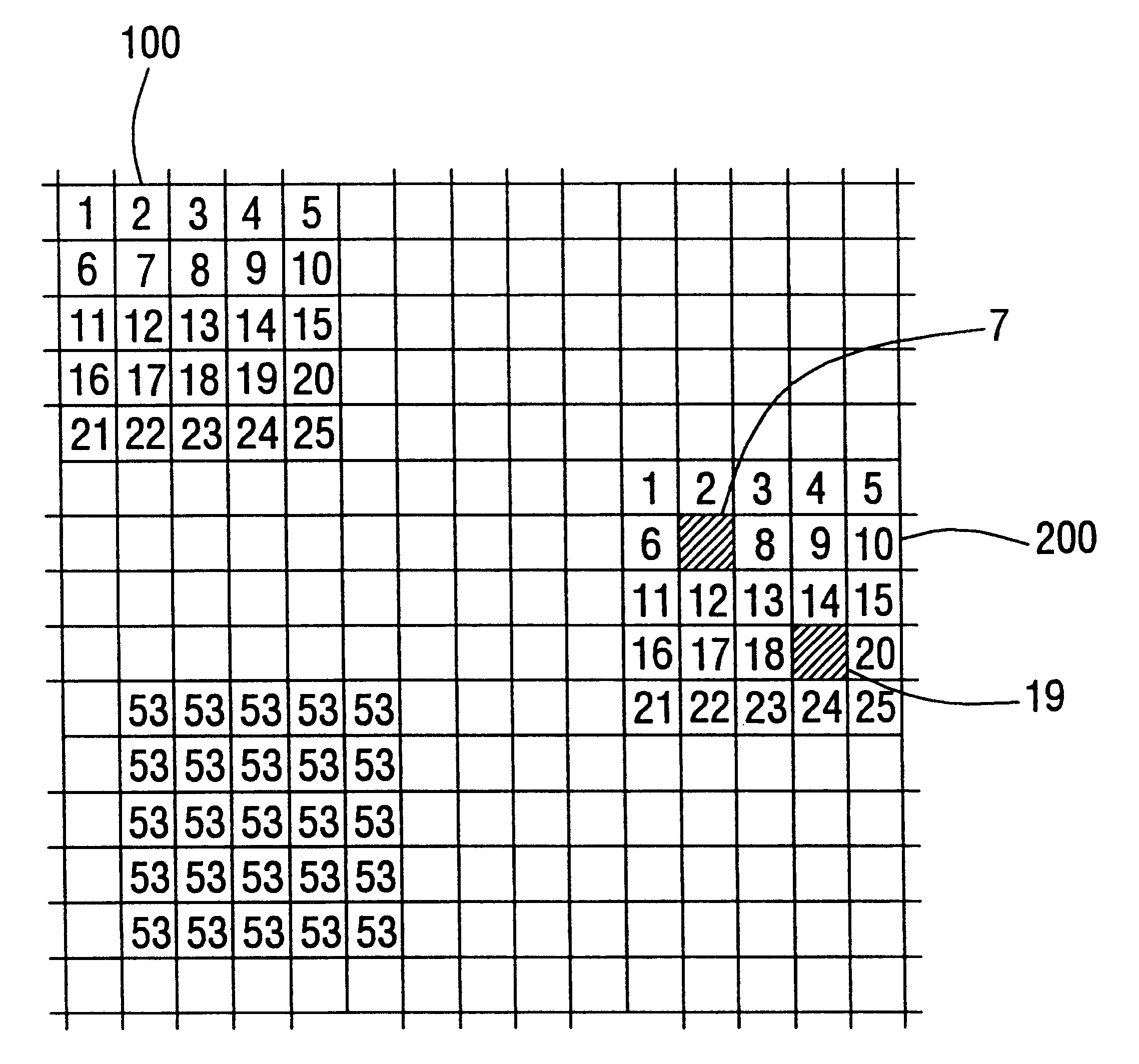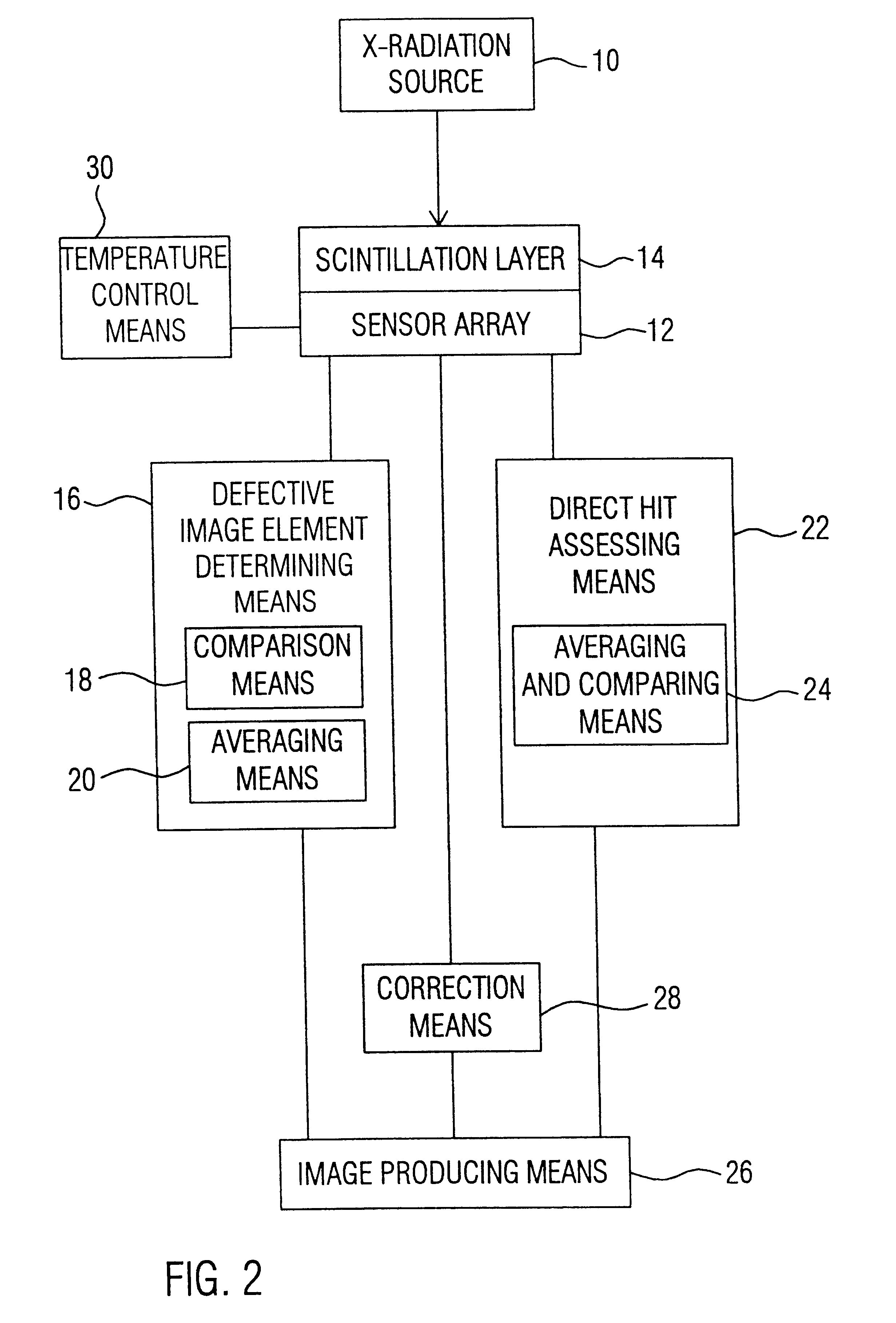Method and device for imaging in digital dental radioscopy
a digital dental radioscopy and imaging technology, applied in the field of digital dental radioscopy imaging methods and devices, can solve the problems of deteriorating image quality, difficult to show a whole tooth on a single x-ray image, and higher resolution normally not making sens
- Summary
- Abstract
- Description
- Claims
- Application Information
AI Technical Summary
Benefits of technology
Problems solved by technology
Method used
Image
Examples
Embodiment Construction
As has already been stated hereinbefore, the present invention makes use of a sensor with image elements which are markedly smaller than would be necessary for the desired local resolution. A detail of such a sensor is schematically shown in the only figure of the present application. As can be seen in this figure, a plurality of image elements 1 to 25 forms a so-called effective image element 100. In the embodiment shown in the figure, each effective image element is formed by 5.times.5 image elements. It is, however, apparent that this number only serves as an example, other distributions being likewise imaginable. The resolution of digital X-ray sensors is, however, typically limited to approx. 50 .mu.m so that the side length of an effective image element 100 is 50 .mu.m. It follows that, in the embodiment shown, the individual image elements 1 to 25 each have an area of 10 .mu.m.times.10 .mu.m.
As has already been explained hereinbefore with reference to the prior art, the image...
PUM
 Login to View More
Login to View More Abstract
Description
Claims
Application Information
 Login to View More
Login to View More - R&D
- Intellectual Property
- Life Sciences
- Materials
- Tech Scout
- Unparalleled Data Quality
- Higher Quality Content
- 60% Fewer Hallucinations
Browse by: Latest US Patents, China's latest patents, Technical Efficacy Thesaurus, Application Domain, Technology Topic, Popular Technical Reports.
© 2025 PatSnap. All rights reserved.Legal|Privacy policy|Modern Slavery Act Transparency Statement|Sitemap|About US| Contact US: help@patsnap.com



